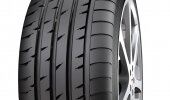Words: Stuart Johnston Communications
Rotax has introduced a number of low-cost up-grades to its karting engine range in South Africa for the 2015 season, following an extremely successful 2014 season in which Rotax Max Challenge competitor entries swelled at tracks throughout the country.
Courtesy of: Rotax
The upgrades to the complete range of ultra-reliable 125 cc water-cooled Rotax engines are introduced in the Model Year 2015 engines, known as EVO engines, but can also be added to karters’ existing Rotax power-plants.
“The key-note of the Rotax success story has been level playing fields in terms of power outputs, which has seen the Rotax series become the most successful karting series in history, and indeed one of the most successful race categories in the entire spectrum of motorsport,” says South African distributor Ed Murray.
“Since Rotax introduced its engines in 1997, they have remained essentially the same, and this continues for MY2015. And typical of Rotax philosophy, the up-grades can be easily applied to competitors existing engines, at an extremely low cost.”
Before the new engines with up-grades were launched for this season, they were put through a rigorous programme of back-to-back comparison tests at the Killarney kart track in Cape Town. The tests were facilitated by the Motor Sport South Africa Karting commission, under conditions laid down by Commission President Joy Dolinscheck. Three top drivers were used to conduct the tests, for both individual up-grade items and complete engine packages, with 2014 engines as a benchmark.
“The tests were all extremely positive,” said Ed Murray. First up was the new carburettor, a Dell’Orto VHSB34XS. The drivers reported that the new carburettor is much more “forgiving”, as it delivers power more cleanly from very low revs, handy if a driver makes a mistake. The new carburettor is extremely well-priced at R2 841.
The next test was for the new ignition system for the Junior Max engine –essentially the same power unit as all other Max engines but tuned for lower power appropriate for the Junior classes. The new ignition system provides smoother power and ensures that the engine revs beyond 12 400 rpm, which was not always possible on the previous set-up, unless expert tuning was employed to optimise the carburettor for each and every race situation.
“The original precept of Max Challenge was to make all engines as equal as possible, and in Junior Max this new ignition system will make fine calibration of the carburettor much less of an advantage,” says Murray. The price of the new ignition system, including a new battery box and wiring harness and coil, ranges between R4 537 and R4 611.
The third big change is the fitment of a new power valve for the exhaust system. The new valve is now electronically controlled, via sensors in the ignition system, replacing the previous power valve, which was pneumatically controlled. It is now 100 per cent precise, and again obviates the need for “expert tuners” to set the device up. The new valve, applicable only to the more powerful senior-class motors, is available as un up-grade at R1 554.
These are the three major performance-orientated changes, although the brand-new MY2015 motors, known as the EVO motors, also come with a new exhaust system that does not affect performance in any way, but makes maintenance easier as the silencers are now separated from the expansion chamber and the mounting system to the engine cylinder has been improved.
Apart from the changes mentioned, the new MY2015 Evo motors are identical in design apart from the add-on upgrades mentioned, but they are painted black with red cylinder heads to distinguish them. The motors also feature some internal upgrades which are not performance related, such as new hardening processes for the connecting rods to increase durability. These new con-rods will be available to competitors using older motors, when the time arises to replace the con-rods as a service-schedule item.
“There is nothing to stop any competitor running an older motor without the upgrades in the championship, for reasons such as budget,” says Murray. “The changes are all designed to make the fields even more equal as far as engine power and drivability is concerned, and this has already been the biggest factor in the Rotax success story for the past 17 years.”
The Rotax success story has revolutionised karting throughout the world. Since 1997 the philosophy has been to build engines that are much lower-revving than traditional karting engines. Lower revs equals less wear, and competitors have found they can run a motor for an entire season without replacing parts, which is definitely not the case for other kart engines which rely on higher revs for performance. Time and again, the low-cost of the Rotax units has seen competitors return to this wonderful formula of “equal-power” racing after being lured away to other formulae by the promise of more power, but subsequently experiencing enormous increases in running costs.
In 2014 the Rotax Series achieved a remarkable resurgence with entries for regional and SA Championship meetings approaching 30 in some classes. The series caters for very young drivers with its Maxterino engines, ( 8 to 13 years) with Junior Max catering from drivers 13 to 16 years old. Senior Max is for drivers 15 years and older, and then are the top-performing DD2 two-speed gearbox classes for Senior drivers and a Masters category for drivers older than 32.
The biggest jewel in the South African Rotax crown came at the end of November at the Grand Finals held in Valancia, Spain. South Africa won the coveted team award, known as The Cup of Nations. The unique Rotax formula offers the chance for champions and vice champions in over 60 countries to compete against each other in a four-day event, and South Africans have won countless titles in the Grand Finals over the years, the first of which was held in late 1999.
No other karting series in the world offers such a level of competitiveness, or a tradition of such low running costs, hence its popularity. Since 1997, close on 100 000 examples of the 125 cc Rotax karting engines have been sold globally!
For more information contact Jennifer Verheul at , or visit the South African Rotax website at www.kart.co.za








